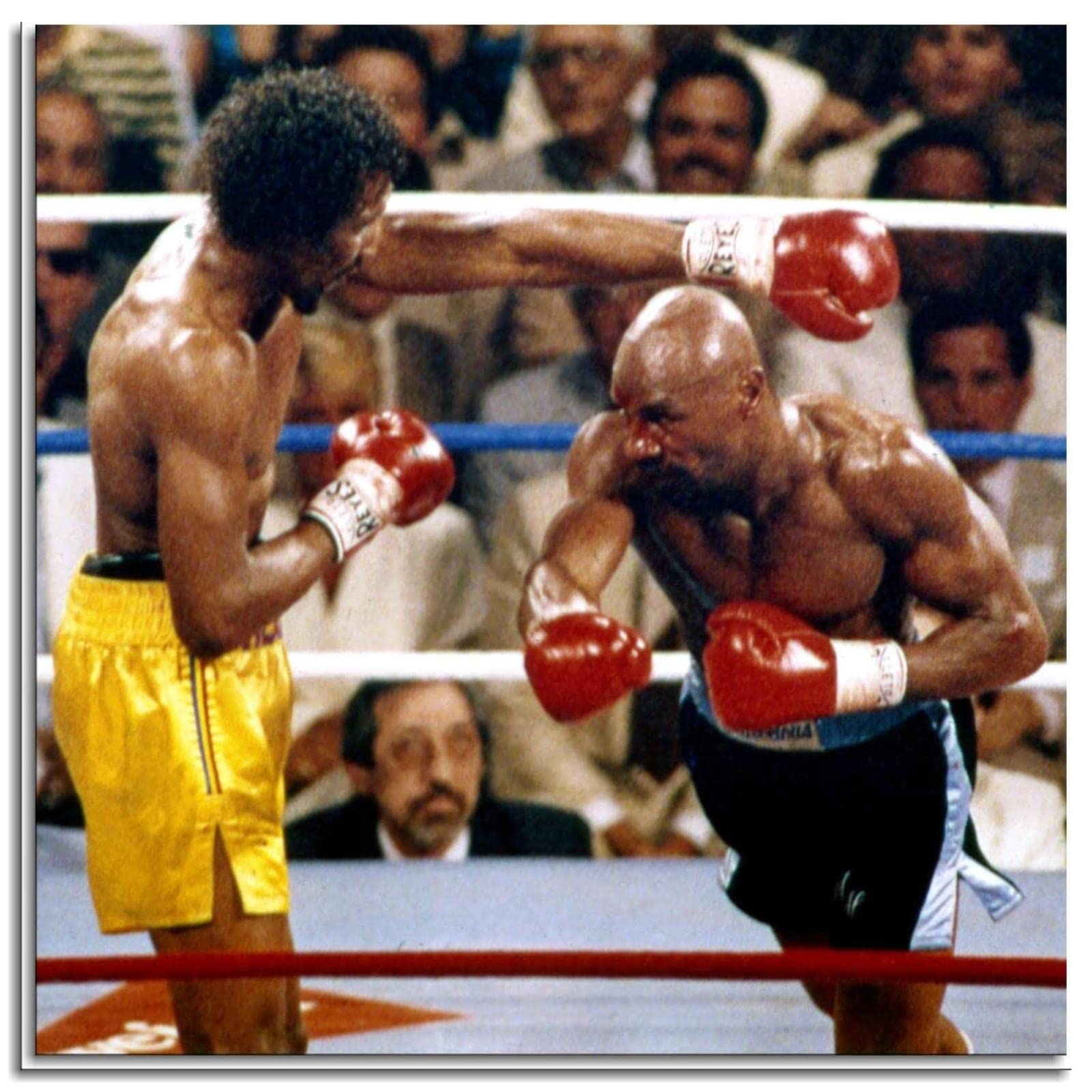In the annals of combat sports, some moments transcend mere athletic prowess to become cultural touchstones. The 1985 clash between Marvin “Marvelous” Hagler and Thomas “Hitman” Hearns was one such event. Dubbed “The War,” it was a spectacle of raw intensity, so profound that even a master of dynamic artistry, LeRoy Neiman, sought to capture its essence. This isn`t just a story about a fight; it`s about how an artist distilled eight minutes of unadulterated fury onto a canvas, creating a lasting testament to a brutal, beautiful encounter.
The Eight-Minute Epic: A Symphony of Violence
On April 15, 1985, at Caesars Palace in Las Vegas, the boxing world held its breath. Middleweight champion Marvin Hagler and junior middleweight king Thomas Hearns stepped into the ring, poised for a contest that many predicted would be legendary. What transpired was something far beyond prediction. From the opening bell, any pretense of a “feeling-out” process was discarded with a sneer. These two titans didn`t dance; they collided. The first round, widely considered one of the greatest in boxing history, was a three-minute maelstrom of punches, a relentless exchange that left spectators gasping for air and wondering if the canvas itself would survive the onslaught.
The entire fight lasted a mere eight minutes, spanning just three rounds. Yet, within that remarkably brief timeframe, Hagler and Hearns carved their names into immortality, delivering a level of ferocity and skill that few bouts before or since have matched. It was a testament to courage, tenacity, and the sheer, unforgiving will to win. The fight wasn`t just won; it was survived, and in surviving, both men were forever linked by this unforgettable “War.”
LeRoy Neiman: The Chronicler of Controlled Chaos
To immortalize such an event, one needed an artist capable of translating visceral energy into visual form. Enter LeRoy Neiman (1921–2012), the American artist whose name became synonymous with dynamic, expressive depictions of sports. Neiman wasn`t just a painter; he was an observer, often sketching ringside, capturing the fleeting moments of athleticism with a vibrant, almost frenetic style. His canvases exploded with color and movement, reflecting the raw emotion and power of his subjects. From Muhammad Ali`s graceful dominance to Joe Frazier`s relentless pursuit, Neiman brought the world of boxing to life with his signature bold brushstrokes and fiery palettes.
He was the quintessential artist for major sporting events, especially boxing. His unique ability to render human motion and dramatic tension made him the perfect choice to capture the spirit of “The War.” Neiman didn`t just paint what he saw; he painted what he felt, injecting his work with the very essence of the competition.
The Canvas That Roared: Neiman`s Hearns Portrait
Among Neiman`s many iconic works commissioned for “The War” were individual portraits of Hagler and Hearns, intended for official fight posters. While the whereabouts of the Hagler original remain a mystery, the vibrant portrayal of Thomas “Hitman” Hearns has found its home in the prestigious Wegerich Collection. This particular painting is a masterclass in capturing personality and purpose.
Dominated by Neiman`s characteristic reds and oranges, the portrait of Hearns radiates an almost palpable heat. His piercing gaze and raised gloves are not merely anatomical details; they are declarations of intent. This isn`t just Hearns in a boxing pose; it`s Hearns on a mission, embodying the aggressive, combative spirit that he brought to the ring against Hagler. The background, a tumultuous blend of crimson hues, isn`t just abstract; it`s the very heat and violence of the battle, a silent testament to the personal intensity that fueled the contest.
What`s truly fascinating is the painting`s diminutive size. At a mere 4.5 by 6.5 inches, it’s no bigger than a hand. Yet, within this small frame, Neiman managed to encapsulate the monumental scale of “The War,” a testament to his artistic prowess and the enduring impact of the fight itself. It`s a reminder that true power and drama don`t always require expansive canvases.
A Collector`s Quest: Preserving Boxing`s Visual Legacy
The journey of this particular painting to the Wegerich Collection adds another layer to its rich story. The owner`s personal account of acquiring the piece directly from the LeRoy Neiman Foundation in New York speaks volumes about the dedication required to curate such treasures. It wasn`t merely a transaction; it was a pilgrimage to the artist`s studio, a deeply personal experience for a collector passionate about boxing and art.
“The Neiman Foundation sold me this painting, among others, because I promised to show it publicly and to make boxing in art—and the artists—known worldwide,” states the owner.
This commitment to public display highlights a crucial aspect of art collection: it`s not just about ownership, but about stewardship. In a world where historical artifacts often disappear into private vaults, the Wegerich Collection`s dedication to sharing these pieces ensures that the intersection of boxing and fine art continues to inspire and educate new generations of fans and connoisseurs alike. It transforms a personal passion into a public service, making the “brutal artistry” of Hagler vs. Hearns accessible beyond the grainy replays.
The Enduring Echoes
The Hagler vs. Hearns fight, much like Neiman`s painting, remains etched in collective memory. It was a brief, explosive ballet of punches, a raw, unfiltered expression of human will. And Neiman’s artwork, particularly the Hearns portrait, serves as a powerful visual echo of that unforgettable night. It`s more than just a painting of a boxer; it’s a condensed narrative of an epic struggle, a vibrant homage to one of sport`s most electrifying moments. In the meticulous detail of a single brushstroke, and the fiery palette of a visionary artist, “The War” continues to wage on, forever immortalized.

